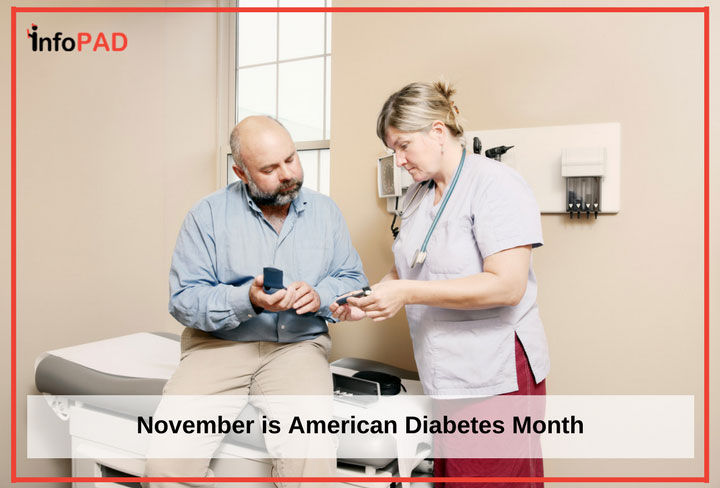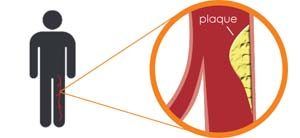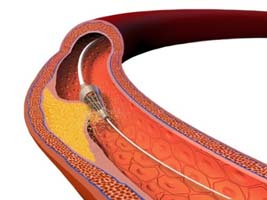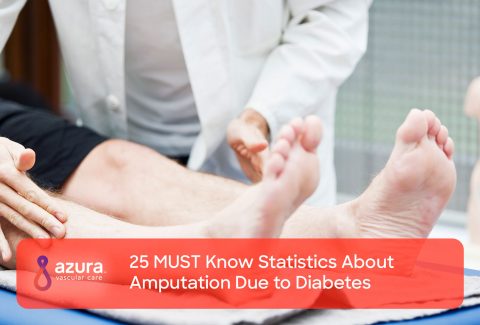
November tends to bring thoughts of family and friends gathered around the Thanksgiving table ushering in the holiday season. It’s a time when we reflect upon the past year and what we have to be thankful for. It’s a time when many people begin to think about the state of their health and the health of their loved ones; which is why it is fitting that November is also recognized as American Diabetes Month. Every year during American Diabetes Month we are encouraged by the American Diabetes Association to pay attention to this disease that 29 million Americans are currently living with, and another 86 million are at risk for. It is a time to recognize and learn the causes and symptoms of diabetes, for Type 1 and 2, as well as the complications and comorbidities that arise as a result of diabetes.
Some of the major risk factors for prediabetes and Type 2 diabetes include, but are not limited to:
- Being Overweight
- Age of 45 years or older
- Having a parent or sibling(s) with type 2 diabetes
- Being physically active fewer than 3 times per week
- Giving birth to a baby that weighed more than 9 pounds
- Gestational Diabetes
Race and ethnicity also play a role in how likely someone is to develop Type 2 diabetes. African Americans, Hispanic/Latino Americans, American Indians, Pacific Islanders, and some Asian Americans are in the highest percentile.[1]
What are Type 1, Prediabetes and Type 2 Diabetes?
Type 1 diabetes is diagnosed most often in children and young adults and only accounts for approximately 5% of all people with the disease.[2] With Type 1, the body does not produce insulin, and without insulin the body is unable to transfer glucose (a simple sugar which is used for energy) from the bloodstream into the cells of the body. Insulin therapy combined with other treatments help people to manage their diabetes.
Prediabetes is a condition in which blood glucose levels are higher than normal, but not high enough to be classified as full-blown diabetes. Those with prediabetes are on the path to developing type 2 diabetes within a decade, but it’s not too late to take action and lower the risk. Adopting a healthier lifestyle that includes weight management, healthy eating, and an increase in physical activity can delay or prevent prediabetes from becoming diabetes.
Type 2 diabetes accounts for the other 95% of people living with diabetes. Type 2 used to be seen mainly among older adults, but with rates of obesity on the rise, more and more children are now being diagnosed with it. This form of diabetes causes the body to improperly use the insulin secreted by the pancreas and typically causes the body to overcompensate and produce more insulin than needed. Over time the body can no longer maintain this production and cannot keep blood glucose levels stable, resulting in illness and severe complications. [3] A combination of medication, a healthy diet and exercise can help control Type 2 diabetes. If not controlled properly, diabetes can lead to a series of complications and other illnesses including Peripheral Arterial Disease (PAD).
Diabetes and PAD
 Peripheral Artery Disease (PAD) occurs when blood vessels in the limbs become narrowed or blocked by fat deposits; as a result, blood flow to the limbs decreases. If not properly treated this can lead to heart attack, stroke, non-healing foot ulcers and, in extreme cases, amputation. People living with diabetes have a much higher risk for PAD. In fact, an estimated 1 out of every 3 people with diabetes over the age of 50 has PAD.[4]
Peripheral Artery Disease (PAD) occurs when blood vessels in the limbs become narrowed or blocked by fat deposits; as a result, blood flow to the limbs decreases. If not properly treated this can lead to heart attack, stroke, non-healing foot ulcers and, in extreme cases, amputation. People living with diabetes have a much higher risk for PAD. In fact, an estimated 1 out of every 3 people with diabetes over the age of 50 has PAD.[4]
Other risk factors for PAD include:
- Smoking
- High blood pressure
- Abnormal blood cholesterol levels
- Overweight
- Physical inactivity
- Over age 50
- Family or personal history of heart disease or stroke
Diabetes alone can be challenging to manage, but combined with PAD a variety of other complications that pose a serious threat to the body, specifically the limbs, may arise. There are a few key steps to follow if you have diabetes that may help lower the risk of peripheral arterial disease:
- Maintain your blood sugar level in the normal range
- Control your blood pressure
- Manage your weight
- Work closely with your health care team to ensure your urine albumin levels are being monitored. (The American Diabetes Association suggests that people with type 2 diabetes should be screened for urine albumin levels at the time of diagnosis and once a year thereafter.)[5]
Even if you follow these guidelines it is still possible to get PAD. This is why it is vital to know the signs so that if you think you may have the condition, you can receive treatment promptly and avoid complications.
The most common PAD symptoms are:
- Painful cramping in your hip, thighs, or calf muscles
- Leg numbness or weakness
- Non healing sores on your feet, legs or toes
- Discoloration of the leg
If one or more of these PAD symptoms or PAD risk factors are present, you should ask your doctor about peripheral artery disease so they can properly evaluate your symptoms. If you do find out you are living with PAD, there are many options available, including non-surgical, minimally invasive options.
What are PAD Treatment Options?
If you have been diagnosed with PAD then the major goals for treatment include: reducing symptoms, improving quality of life and mobility, and preventing heart attack, stroke, and amputation. Together with your health care provider, you will determine which of the PAD treatment options is right for you.
There are three main approaches to treating PAD:
- Making lifestyle changes
- Taking medication
- Having a surgical or interventional procedure performed
If your condition has progressed beyond making lifestyle changes or taking medication, there are several minimally invasive, non-surgical options to treat PAD.
Arteriogram
An arteriogram is an imaging test that uses x-rays and a contrast agent (sometimes referred to as “dye”) to see inside arteries.
Angioplasty and Stenting
Angioplasty is used to open narrowed arteries. This technique uses a very small balloon attached to a thin catheter, which is inserted into a blood vessel through a small nick in the skin. The catheter is threaded, under x-ray guidance, to the site of the blockage then the balloon is inflated to open the artery. Sometimes, a small metal scaffold, called a stent, is inserted to keep the blood vessel open and improve blood flow.
Atherectomy
 An atherectomy is a minimally-invasive method for treating PAD that removes the plaque within the vessel. The advantages of atherectomy are less vessel trauma, no foreign object left in the body, and future treatment options are open for the patient.
An atherectomy is a minimally-invasive method for treating PAD that removes the plaque within the vessel. The advantages of atherectomy are less vessel trauma, no foreign object left in the body, and future treatment options are open for the patient.
Make sure to be your own advocate and be proactive for better health! Both diabetes and PAD are serious medical conditions that are often ignored and overlooked, however both are manageable if caught and treated early. If you think you are at risk, find a PAD specialist to evaluate you and be sure to get screened at the first sign of the previously described symptoms.
Sources:
[1] Centers for Disease Control and Prevention. (2016, January 14). About Prediabetes & Type 2 Diabetes. Retrieved June 29, 2016, from http://www.cdc.gov/diabetes/prevention/prediabetes-type2/index.html
[2] http://www.diabetes.org/diabetes-basics/type-1/?loc=util-header_type1
[3] American Diabetes Association. (n.d.). Type 2. Retrieved June 29, 2016, from http://www.diabetes.org/diabetes-basics/type-2/?loc=db-slabnav
[4] http://www.diabetes.org/living-with-diabetes/complications/heart-disease/peripheral-arterial-disease.html
[5] American Diabetes Association. (2014, September 24). Peripheral Arterial Disease (PAD). Retrieved June 29, 2016, from http://www.diabetes.org/living-with-diabetes/complications/heart-disease/peripheral-arterial-disease.html?referrer=https://www.google.com/


